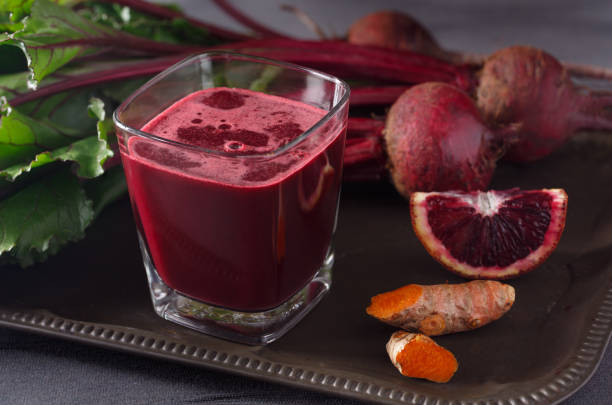The #1 Rated Blood Sugar Formula
Top 10 Anti-Inflammatory Foods for High Blood Pressure

Yes, an anti-inflammatory diet is suitable for high blood pressure. Inflammation in the body can cause constriction in the blood vessels, resulting in increased blood pressure. Hence, reducing the inflammation will have a calming effect on the blood vessels.
Research suggests that low-grade inflammation is a primary force behind the development and progression of hypertension, also known as chronic high blood pressure. Inflammation stemming from certain diet and lifestyle habits, like smoking and eating too much added sugar, creates a "pro-inflammatory environment" that allows inflammation to not only stick around but also increase, leading to increased oxidative damage and stiffness in blood vessels, which, if persistent over time, can lead to hypertension.
This means that one of the best approaches to managing blood pressure both short- and long-term is to focus on foods naturally low in sodium that also reduce inflammation. Here are some of those top low-sodium, anti-inflammatory foods to help manage blood pressure.
1. Tomatoes
Tomatoes' red hue comes from lycopene, a phytochemical that can help reduce blood pressure by scavenging free radicals. This action works to minimize oxidative damage and reduce inflammation, potentially decreasing systolic blood pressure—the top number in a blood pressure reading that measures the pressure in your blood vessels when your heart beats.
Lycopene in tomatoes is utilized best when the tomatoes have been cooked, so lower-sodium tomato pastes, roasted diced tomatoes and tomato sauces are top sources. Other sources are watermelon, pink grapefruit, apricots and papaya, which all get their pinkish-orange color from lycopene.
2. Sweet Potatoes
For a healthy dose of potassium, skip the banana and choose a sweet potato instead. Loading up on potassium-rich foods, while decreasing sodium, is a key part of the DASH diet for hypertension. In addition to being at the top for potassium content, sweet potatoes are also excellent sources of the antioxidants vitamin C and beta carotene, which both help to minimize free radicals and inflammation.
Other foods high in potassium include beets, plain yogurt, beans, halibut, cod and winter squash. You also get more potassium when you choose a less-processed form of most foods, especially produce and plants, so go for whole forms of these foods more often.
3. Blueberries
Similar to how tomatoes get their color from lycopene, blueberries get their purplish-blue color from anthocyanins, plant compounds that appear to decrease blood pressure by improving blood vessel dilation and blood flow. A recent study suggests that eating about a cup of blueberries each day can decrease systolic blood pressure.
And while all berries that have a deep red or purple color are good sources of anthocyanins, blueberries—and particularly those labeled "wild" blueberries—have the highest anthocyanin levels.
4. Pistachios
Nuts are part of the DASH diet to reduce hypertension, but pistachios in particular are one of the best to snack on. Not only are they a great source of potassium, but pistachios are good sources of vitamin E, lutein and zeaxanthin—all of which have antioxidant and anti-inflammatory effects that may ease underlying conditions contributing to hypertension.
A 2013 study suggested that eating 1.5 ounces of pistachios each day relaxed blood vessel walls to improve circulation and to decrease blood pressure. If you're trying to cut back on sodium, choose unsalted varieties (you can always add a pinch of salt yourself, or try other spices like cinnamon or chili powder).
5. Yogurt
Calcium directs the constriction and relaxation of blood vessels, so getting adequate amounts is key for regulating a healthy blood pressure. However, it's a mineral that most of us don't get nearly enough of each day.
Lower-fat dairy products like yogurt and milk are some of the best calcium sources (and also happen to be naturally low in sodium), but choosing yogurt may also give an anti-inflammatory edge when it comes to hypertension. The reason is that strains of good bacteria in yogurt can strengthen gut health, which prevents fewer outside compounds from crossing over into our blood, reducing the potential for additional inflammation.
6. Leafy Greens
Magnesium is another mineral involved in blood pressure regulation that most Americans do not get enough of, and leafy greens like spinach, kale and arugula are excellent sources of magnesium. Eating more of these magnesium-rich foods can help relax blood vessels. Plus, leafy greens provide nutrients with anti-inflammatory and antioxidant effects to help regulate blood pressure.
7. Flaxseeds
Sprinkling ground flaxseeds into daily smoothies, oatmeal or other dishes is an easy addition that has the potential to significantly decrease blood pressure. In fact, one study found that subjects who ate 30 grams of flaxseeds daily saw a reduction in overall blood pressure.
These seeds' effects appear to come from their combination of fiber, an omega-3 fatty acid known as alpha-linolenic acid and bioactive compounds called lignans. In fact, research suggests this combination makes long-term daily intake of flaxseeds one of the most effective dietary behaviors for reducing blood pressure.
8. Beans, Peas & Lentils
Choose from kidney beans to black-eyed peas to chickpeas to green lentils—just get those legumes in, since research suggests eating a serving a day can significantly reduce blood pressure. This is thanks to legumes being great sources of fiber (a half-cup has 7 to 9 grams), as well as potassium and magnesium—two essential minerals for blood pressure regulation.
The high fiber content in beans, peas and lentils also means they provide complex carbohydrates with a low glycemic index (meaning they won't spike blood sugar levels, which prevents irritation in the blood vessels). For best results, substitute ½ to 1 cup of any legume—canned, dried or even ground into flour—for refined-carb foods, like white pasta, white rice and white flour. If using canned, opt for no-salt-added, and rinse them to reduce sodium before adding them to a recipe.
9. Olive Oil
10. Beets
Don't overlook this root vegetable, because beets are packed with nutrients that appear to improve blood circulation and reduce blood pressure. Not only are beets a top source of potassium, folate and the antioxidant vitamin C, but they also have naturally high levels of nitrates, which research has recently linked to reducing blood pressure.
Found in many fruits and vegetables, dietary nitrates are different from nitrites added to cured and processed foods. Instead, these get converted to nitrate oxide, a byproduct that relaxes muscles, allowing blood vessels to dilate and blood pressure to decrease.






